Natural Characteristics I
Effects of Growth Ring
- Growth rings are distinctive due to the light and dark colors
- Lighter portion is usually grown in the spring, called “springwood”
- Darker portion is usually grown in the summer, called “summerwood”
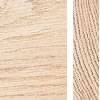 Wide Growth Ring
Wide Growth Ring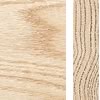 Narrow Growth Ring
Narrow Growth Ring
Burl Grain
- Also known as curly grain, burly grain, fiddleback, or figure wood
- Causes include knot location, damage to cambium layer of bark, and tree genetics
- Common in most wood types
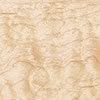 Hard Maple
Hard Maple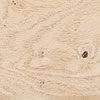 Red Oak
Red Oak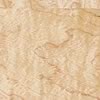 Soft Maple
Soft Maple
Tiger Stripe and Cross Fire
- Unique pattern common in Red and White Oak
- Also in Hard and Soft Maple
- Most often found along with burl grain
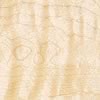 Hard Maple
Hard Maple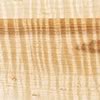 Soft Maple
Soft Maple
Bird’s Eye
- Small area where fibers form circular figures on the surface
- Common in Hard Maple
- Rare in other wood types
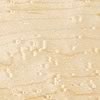 Bird’s Eye Hard Maple
Bird’s Eye Hard Maple
Knots
- Closed Knot. Flat face with no openings in the surface.
- Open Knot. May occur as a very small pin-sized hole to a large gaping hole.
- Unsound Knot. A portion of the wood will move readily. Also known as a loose knot.
- Sound Knot. Also known as a tight knot. Solid, with no portion moveable. As hard as surrounding wood with no signs of decay.
- Pin Knot. Small, sound, and tight.
- Knot Cluster. A grouping of usually small knots.
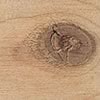 Closed Knot
Closed Knot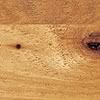 Open Knot
Open Knot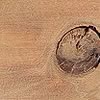 Unsound Knot
Unsound Knot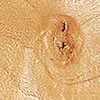 Sound Knot
Sound Knot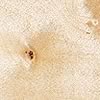 Pin Knot
Pin Knot Knot Cluster
Knot Cluster
Bird Peck
- Woodpecker produces a small hole, which is a starting point for brown to blackish mineral streak
- Most common in Hickory and Cherry
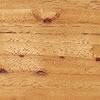 Bird Peck in Hickory
Bird Peck in Hickory
Cat’s Paw
- Cluster of pin knots in the shape of a cat's paw
- Most common in Cherry
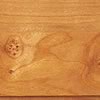 Cat’s Paw in Cherry
Cat’s Paw in Cherry
 Wide Growth Ring
Wide Growth Ring Narrow Growth Ring
Narrow Growth Ring Hard Maple
Hard Maple Red Oak
Red Oak Soft Maple
Soft Maple Hard Maple
Hard Maple Soft Maple
Soft Maple Bird’s Eye Hard Maple
Bird’s Eye Hard Maple Closed Knot
Closed Knot Open Knot
Open Knot Unsound Knot
Unsound Knot Sound Knot
Sound Knot Pin Knot
Pin Knot Knot Cluster
Knot Cluster Bird Peck in Hickory
Bird Peck in Hickory Cat’s Paw in Cherry
Cat’s Paw in Cherry Loading... Please wait...
Loading... Please wait... 